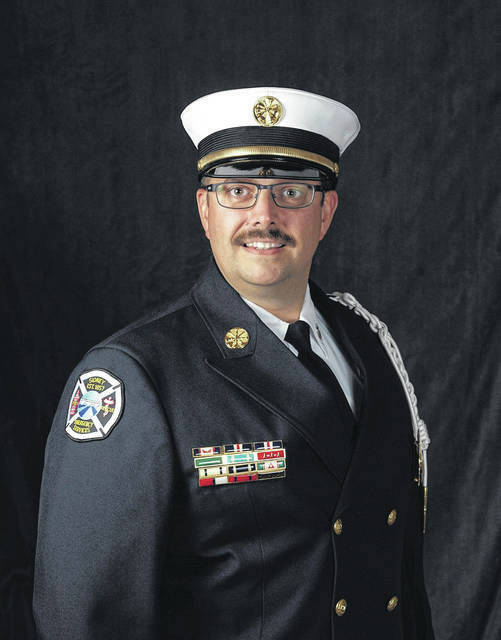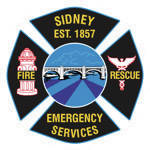

SIDNEY — As temperatures and humidity rise, the Sidney Fire and Emergency Services department cautions citizens to be mindful of heat illness.
“Heat illness is a term that encapsulates several conditions that range from mild discomfort to life threatening. Heat cramps, heat exhaustion, and heat stroke are common terms to many and at times are used interchangeably. However, these three heat illnesses are very different and must be given early attention if symptoms present,” Sidney Fire Chief Chad Hollinger said.
According to the Korey Stringer Institute, these illnesses are not always a progressive process. A common misconception is that heat illness begins with heat cramps and if left untreated progresses to heat stroke. This can happen, but is not always the standard.
According to the Center for Disease Control (CDC), heat cramps are muscle pains or spasms that usually occur in the abdomen, arms or legs, and may occur in association with strenuous activity. People who sweat a lot are prone to heat cramps due to the fact that sweating depletes the body’s salt and moisture. Low salt level in the muscles cause painful cramps. In the event of heat cramps, it’s recommended to stop all activity and sit quietly in a cool place and to drink clear juice or a sports beverage. Do not resume strenuous activity for a few hours after the cramps subside; further exertion may lead to heat exhaustion or stroke. If cramps do not subside in an hour, seek medical attention.
Heat exhaustion is a milder form of heat-related illness that can develop after several days of exposure to high temperatures and inadequate or unbalanced replacement of fluids. Those most prone to heat exhaustion are elderly people, those with high blood pressure, and those working or exercising in a hot environment.
The warning signs of heat exhaustion are:
• Heavy sweating
• Paleness
• Muscle cramps
• Tiredness
• Weakness
• Dizziness
• Headache
• Nausea or vomiting
• Fainting
In the event of heat exhaustion, the CDC recommends drinking cool, nonalcoholic beverages, getting rest, taking a cool shower or bath, seeking an air-conditioned environment, and wearing lightweight clothing.
Heat stroke is the most serious heat-related illness, occurring when the body becomes unable to control its temperature. The body’s temperature rises rapidly, the sweating mechanism fails, and the body is unable to cool down. Body temperature may rise to 106 degrees Fahrenheit or higher within 10 to 15 minutes. Heat stroke can cause death or permanent disability if emergency treatment is not provided.
• An extremely high body temperature (above 103 degrees Fahrenheit)
• Red, hot, and dry skin (no sweating)
• Rapid, strong pulse
• Throbbing headache
• Dizziness
• Nausea
• Confusion
• Unconsciousness
If someone notices any of the above signs in someone, call for immediate medical assistance and cool the victim. Do the following:
• Get the victim to a shady area.
• Cool the victim rapidly.
• Monitor body temperature and continue cooling efforts until the body temperature drops to 101 to 102 degrees Fahrenheit.
• If emergency medical personnel are delayed, call the hospital emergency room for further instructions.
• Do not give the victim alcohol to drink.
• Get medical assistance as soon as possible.
Those who engage in outdoor activities such as athletes and those whose work conditions require outside work during periods of high temperatures and high humidity can take precautions to prepare their bodies for these situations. Proper hydration is a key component to this preparation. The Cleveland Clinic provides a standard consumption of 2.3 quarts for an adult female and 3.2 quarts for an adult male per day, but further advises that a healthcare provider can confirm the right amount for each individual. This individual amount will be based on the individual’s medical condition and anticipated activity levels.
“Another way to prepare for outdoor activity in periods of heat and humidity is proper heat acclimatization. Initially, activity should be light and frequent rests should be taken. As the individual becomes acclimated, more strenuous activity and less rest will be required,” Hollinger said.
In 2019 the department of Fire and Emergency Services handled 19 calls related directly to dehydration and heat illness. In 2020 the number dropped to 10, but in 2021 the department has already responded to eight incidents related to dehydration and heat illness.
“The community is encouraged to enjoy what remains of the summer of 2021. Please do so with these recommendations in mind; be mindful of proper hydration, acclimate to the conditions, and remain aware of the signs and symptoms of heat illness,” Hollinger said.



